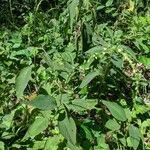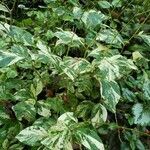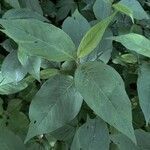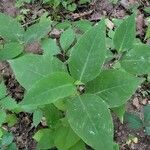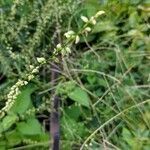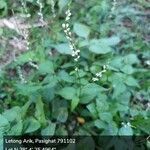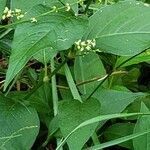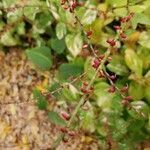Plants perennial, 4.5-6(-13) dm; rhizomatous. Stems ribbed, gla-brous or strigose. Leaves: ocrea brownish hyaline, cylindric, 10-20 mm, base inflated or not, margins truncate, ciliate with bristles 0.5-4 mm, surface strigose to tomentose; petiole (0.1-)1-2 cm, leaves sometimes sessile; blade 5-17.5 × 2-10 cm, apex acute to acuminate, faces pubescent abaxially, strigose and scabrous adaxially. Inflorescences (50-)100-350 × 7-15 mm; peduncle 10-70 mm, pubescent or glabrous distally; ocreolae not overlapping, margins ciliate with bristles to 3 mm. Pedicels ascending to spreading, 0.5-1 mm. Flowers 1-3 per ocreate fascicle; perianth white, greenish white, or rarely pink, glabrous, accrescent; tepals elliptic to obovate, 2.5-3.5 mm, apex acute to acuminate; filaments distinct, outer ones sometimes adnate to perianth tube; anthers yellow or pink, ovate; styles distinct. Achenes included except for apex and styles, brown to dark brown, biconvex, 3.5-4 × 2-2.8 mm, dull to shiny, smooth to rugose. 2n = 44.
More
A herb which keeps growing from year to year. It grows 60-120 cm high and spreads 80-150 cm wide. The leaves are oval and pointed. They are 15 cm long. They taper to a fine tip. They are downy. They have dark markings. The flowers are greenish-white. They are very small and in narrow spikes.
